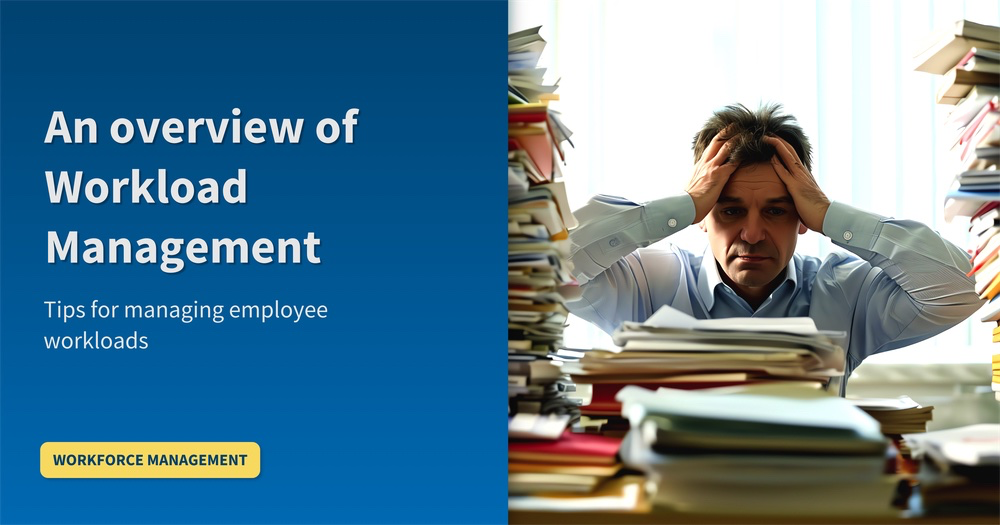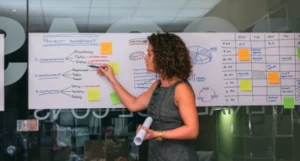An Overview of Workload Management and Tips for Managing Employee Workloads

Table of contents
- What is workload management?
- What is the importance of workload management?
- Tips for effective workload management
- 3.1. Make time to plan
- 3.2. Determine your resource availability
- 3.3. Estimate tasks and set realistic deadlines
- 3.4. Make a capacity plan
- 3.5. Make a list of task dependencies
- 3.6. Make sure that the objectives you set are SMART
- 3.7. Try not to multitask
- 3.8. Implement daily standups
- 3.9. Manage change
- 3.10. Register time
- Conclusion
- Frequently Asked Questions
Did you know that almost half of all organizations have had a failed project in the last year? While it’s simple to point the finger at market conditions, competition, or a lack of resources, the real reason is often much closer to home.
A lack of competent leadership and outdated processes is a disease that has a substantial impact on the success of a project. Effective leadership inspires and encourages people to reach their full potential, and regularly examines business procedures to ensure optimal productivity throughout a project’s life cycle.
With these guidelines, whether you’re a seasoned or inexperienced project manager, you’ll be able to combine some of the talents that the most effective project managers bring to their projects.
What is workload management?
Workload management is the process of increasing team productivity and effectively delegating tasks. Frameworks and methodologies such as SCRUM, Scaled Agile Framework (SAFe), and Kanban are frequently used to guide the structure.
Tasks are assigned accordingly when working under the umbrella of these philosophies. Rules for priority and change management are also established, as are the definitions of Done and Ready. As the project manager, it is your responsibility to optimize and personalize these concepts to get the greatest results.
Consider making available possibilities for professional growth, such as project management courses with credentials, as part of improving workload management and establishing a productive remote work environment for your team. These courses can provide complete training in various project management approaches and tools, delivering significant skills and knowledge to both managers and team members.

What is the importance of workload management?
Workload management leads to a more productive team and a strong sense of project health. You’ll be able to predict bottlenecks and devise an attack strategy before they happen.
A well-managed workload approach can help you evaluate whether more resources are needed to accomplish milestones and who your most effective resources are.
An added benefit is that team members are motivated and emotionally invested in the outcomes of their job. The end effect is a more productive team with reduced churn, better communication, higher quality, and more solutions introduced by team members.

Tips for effective workload management
Managing workload is no easy task. It is quite difficult to juggle projects, tasks, deadlines, and talents in the workplace. In a short time, it can become overwhelming. If you wish to perfect this art, you must first learn how to do it efficiently. The easiest strategy to manage workload is to use the ways listed below to achieve your goals.
Make time to plan
Always remember to look before you leap. Planning chores and projects is critical in both personal and professional situations. Whatever you’re preparing, it allows you to take a step back and focus on what’s important. Setting an estimate for each activity, specifying the start and end date, identifying your tasks, providing adequate descriptions, and categorizing them. There are several methods to perform the ritual and promote a culture of planning, and all of them are worthwhile since only then can you create project timetables, track progress, and register time.
Determine your resource availability
It is critical to have complete visibility of resource allocations to projects and activities in order to make the most use of people’s time and talents. This becomes more challenging if you have multiple projects running at the same time. If you have more than ten resources assigned to different projects, it’s time to invest in a simple but effective resource management application. You may now plan and allocate project tasks in advance if you have a clear view of resource availability. You must be aware of who will be absent during the project and whether there are any other limitations. If you discover that a crucial resource will be unavailable when you need him or her, assign the task to another colleague.
Estimate tasks and set realistic deadlines
Task estimation can assist you and your team in intelligently planning the project and setting deadlines that everyone can reach. After all, everyone works at their own pace, and it’s critical to understand how long specific activities will take them to accomplish. With realistic deadlines in place, no project will be left dangling by a thread since you’ll have more visibility and control over your team’s workflow, ensuring that no member of the team is overburdened or underutilized.
Make a capacity plan
Employees that are overburdened are ineffective. Timely task distribution management can assist you in determining when more hands are required on the project. It is critical that everyone on the team maintains a work-life balance rather than spending every day mired in chores and ticket requests. Harvard Business Review has conducted research to see whether employees are competent at setting limits. As it turns out, they aren’t: managers occasionally send them emails outside of office hours, and they feel obligated to respond, even if they aren’t urgent. Still curious about where that burnout shoe pinches?
Make a list of task dependencies
Many project managers compare project management to putting together a jigsaw because the project manager must see all of the parts (tasks) and arrange them in the best possible order to achieve the best outcomes. In other words, neither individuals nor puzzles can exist in isolation. All of the things we perform are interdependent and linked to one another. It is possible that some employees will become trapped since they are dependent on other activities being completed. Setting dependencies makes it easy to identify roadblocks that may be eating into your project’s timeline.
Make sure that the objectives you set are SMART
SMART is an acronym that stands for Specific, Measurable, Attainable, Relevant, and Time-bound. ‘Specific’ means it addresses a specific need or targets a narrow area to be improved,’measurable’ means it can be quantified, ‘attainable’ means it is realistic,’relevant’ means it aligns with other business objectives, and ‘time-bound’ means it has a deadline. SMART goals will assist your team to rationalize the tasks you assign and realize how their contribution to the project’s success will make it easier to secure good employee workload management.
Try not to multitask
We all know we should do more, but attempting to do too much at once can be daunting and frustrating. It needs discipline and focus to do one task at a time so that your work does not stall. Actually, multitasking is a fiction. The human brain is not wired to do multiple tasks at the same time, or at least not well. Multitasking in project management can cause you to prioritize haste over relevance and importance. Task and workload management necessitates a keen focus, which multitasking excels at. To be honest, it is often difficult to avoid multitasking, but try to prevent it whenever possible.
Implement daily standups
The simplest method to achieve transparency is to gather the entire staff for at least 10 minutes every day. After all, retaining effective communication and holding regular standups is essential for keeping everyone on the same page throughout your project. Your team members will have the opportunity to learn about each other’s progress, understand what they need to accomplish next, and brainstorm if there is a problem impeding project success. With daily standups, you can easily see if any dependencies are preventing team members from doing their best job.
Manage change
Workload management is all about dynamics, thus you should always be prepared for force majeure circumstances and impromptu meetings. However, understanding what to expect and being able to adjust fast will help you foresee and handle change. As your project progresses, you will almost certainly be forced to make changes to match the initial timeline and budget. This is why having a plan B, D, and C for dealing with unexpected scenarios will help to keep your teams on track at all times.
Register time
Registering time helps managers focus and measure progress on tasks and projects, so you can see where your team’s time is going, which is especially important during the pandemic. When employees record their time, you may calculate the percentage of billable work (time spent productively on client projects) and identify if someone is working too much or if anything is taking up too much of their time, such as meetings, training, and so on. In addition, time registrations might assist you in measuring consumption rates.
Also Read: How to Identify Overworked Employees and How to Handle Them?
Conclusion
Workload management is essential to have a pleasant and effective workplace. Employers may establish a balanced and sustainable work environment by recognizing employees’ capacities, prioritizing duties, and encouraging open communication. Encouragement of breaks, provision of resources, and recognition of accomplishments all contribute to a positive work culture. Striking this balance ensures that employees feel supported, lowering stress and increasing job satisfaction. Remember that a well-managed workload benefits not just the person but also the success and harmony of the entire team.
Frequently Asked Questions
How can I determine if the workload on my team is manageable?
Workloads should be evaluated on a regular basis, taking into account human capacities, project schedules, and task complexity. To resolve any issues or potential bottlenecks, encourage open communication. If your staff constantly feel overloaded or struggle to meet deadlines, it may be a signal that priorities need to be adjusted or tasks redistributed.
What can I do to help my team achieve a good work-life balance?
Set realistic deadlines, discourage excessive overtime, and emphasize the value of breaks. Encourage staff to take vacation days and to observe non-working hours. Creating a culture that prioritizes personal time benefits employee well-being by avoiding burnout and increasing overall job satisfaction.
How do I deal with an employee who repeatedly exceeds their workload capacity?
Start a conversation with the employee to learn about their problems and potential solutions. Consider relocating duties, adding resources, or changing project timelines. Collaboration and flexibility are essential; striking a balance that works for both the employee and the team helps to sustain productivity and morale. Regular check-ins can provide continuing support and, if necessary, adaptation.



